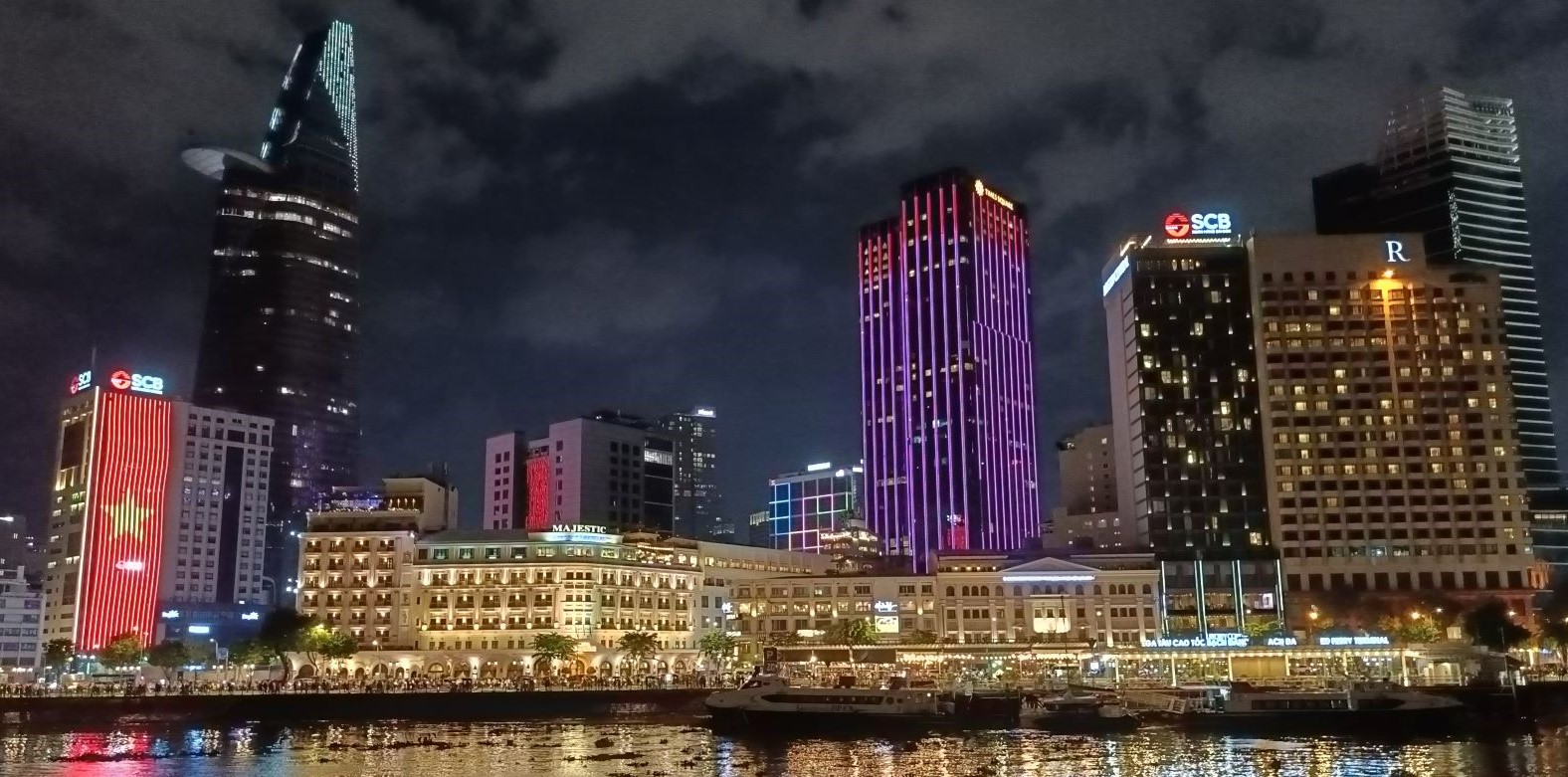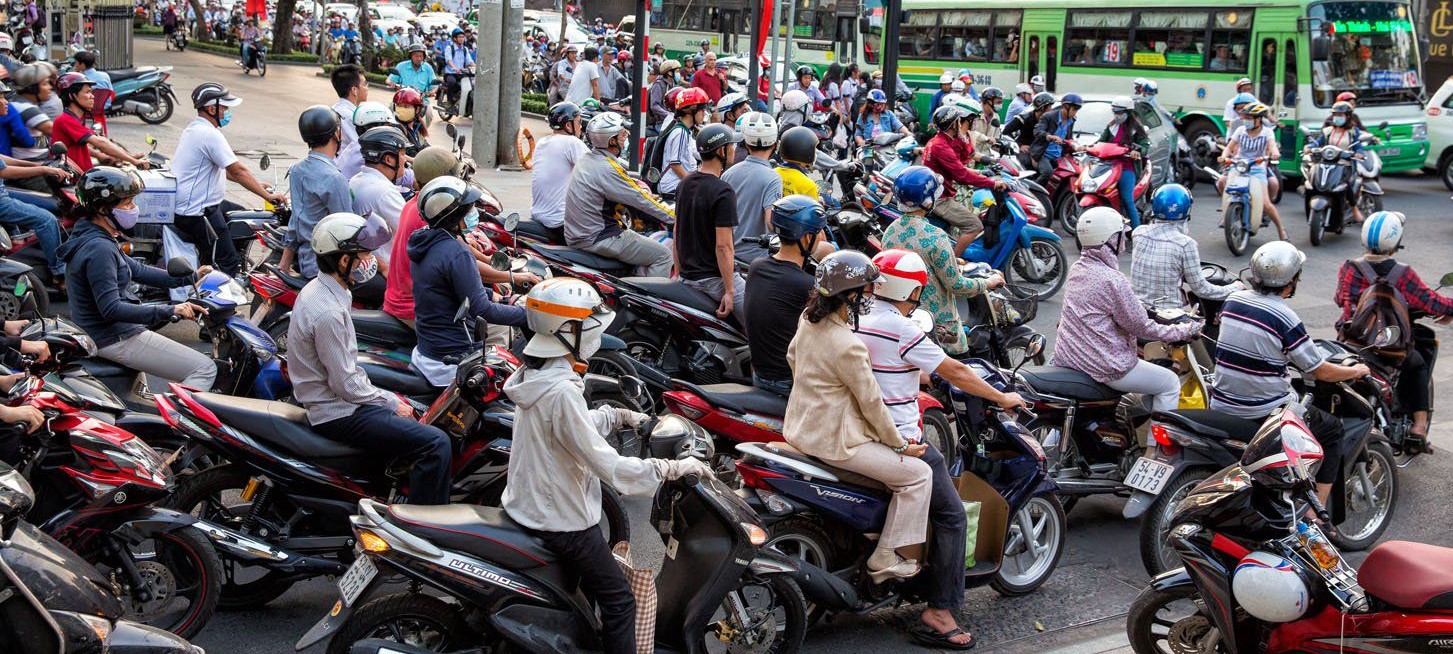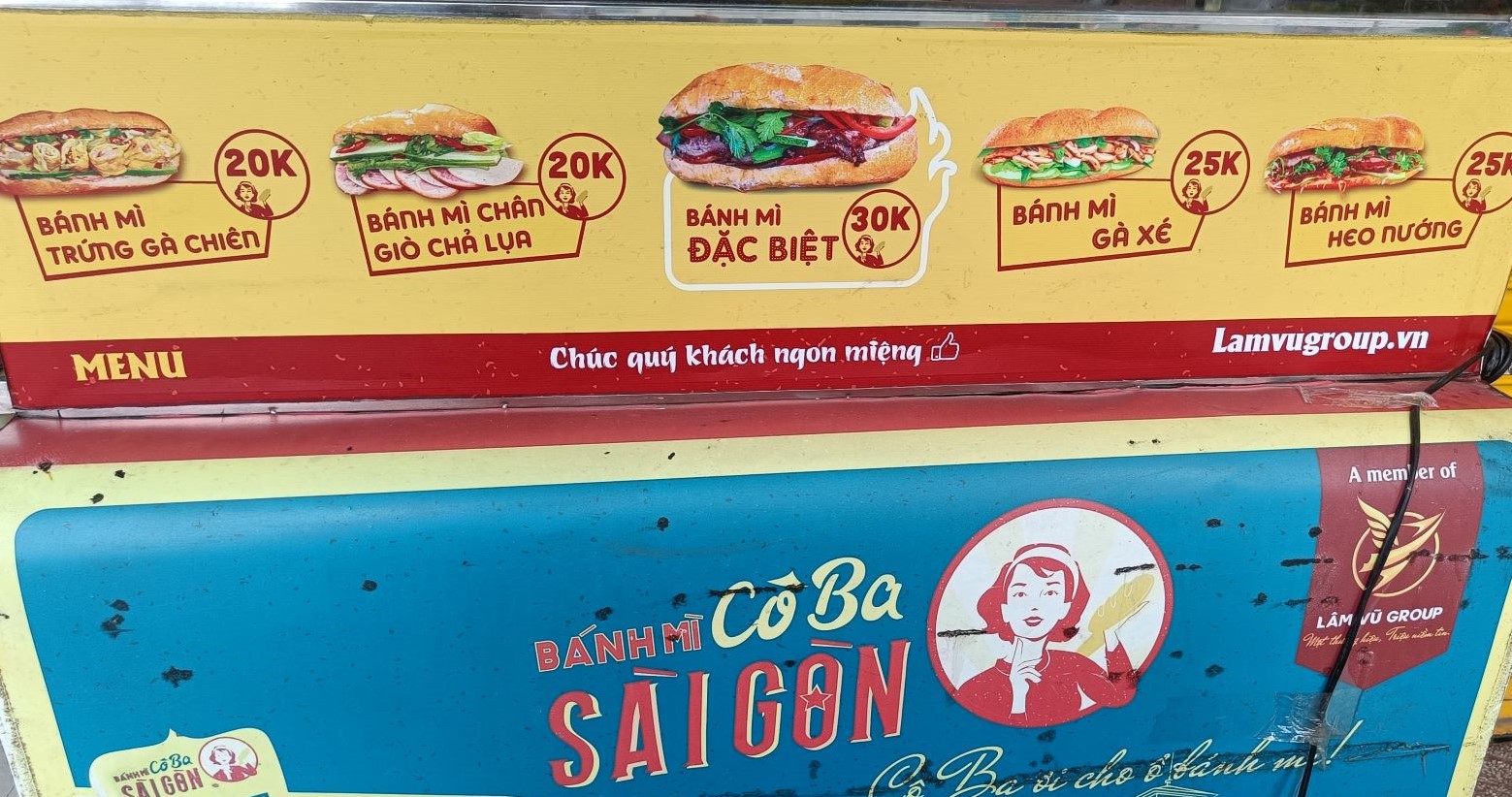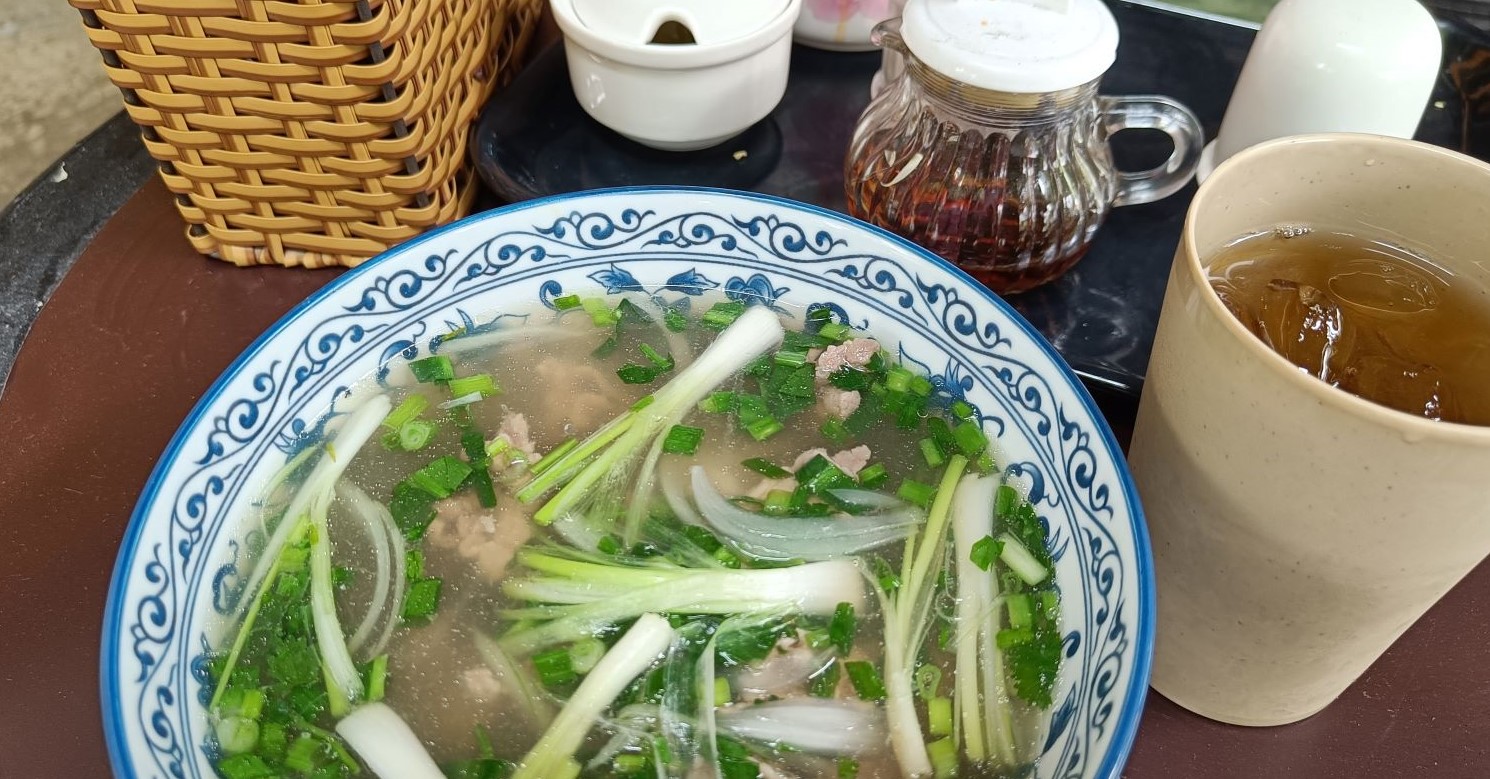Vietnam: First Months
Published: 2022-08-24I sit in a small cafe in Balgowlah, Sydney. It is winter, but the weather is clement. There is talk of rain arriving soon but it is of no concern, merely the common friendly chatter used to kick-start conversations.
The 9am coffee and breakfast crowd are settled in around me, a fair mixture of the area: a couple of families with their children dressed in a bright blue school uniform, obviously ready to walk the kids to the school around the corner; a group of groomed and bespectacled men sipping macchiatos, discussing some important topic with deliberation; laughter comes from the table farthest from me as two friends meet and sip lattes from large black cups, cupping them to warm their hands; two ladies sit near me in gym gear but both with well-presented hair, one occasionally tugging on the leash of a small inquisitive pug which has its tongue hanging from its mouth, like a curious pull-string on an amusing small toy. All the while the soft chatter is complemented by the clinking of crockery and occasionally punctuated by the deep, gruff call of the barista: "Aiden!", "Thanks Jonathan!", "Coffee up please".
I look further to the street, a broken but steady stream of cars appear into view, each in turn waiting and then rounding the small roundabout on the corner. A garbage truck appears and does that same, allowing two small cars to pass before taking its appointed turn. Other cars stop to allow pedestrians to cross the small zebra crossing opposite the cafe. It strikes me as a scene of order, calmness and comfort. Where is the humming of the scooters? The bip-bip of small horns? The rush and the ruggedness? The only thing that grabs my attention is the curious presence of a large palm tree whose large tropical leaves flutter atop its sturdy trunk in the increasing wind preceding the anticipated shower. It is the only thing that links me to our last 3 years in Asia...
I wrote those words a few weeks ago, with the hazy idea of providing a contrast between that and what we have seen so far in Ho Chi Minh City, of chaos vs order, fluid vs rigid, rumpus vs relaxed. But I found it hard to make more than a superficial comparison, especially having only spent a few months poking at Vietnam's veneer, under which I expect lie the depths of a rich culture. Until I plumb those depths, I can only write what we have experienced so far.

Traffic
After a chaotic journey from Kuala Lumpur, we stayed for about 2 months in a temporary apartment in a new development not far to the south-east of the central district of Ho Chi Minh City (or Saigon to many of its inhabitants, especially those who favour history or brevity). Our first introduction to life in Saigon was the constant rumbling of trucks down the Dong van Cong road next to our apartment block. When I say constant, it is no exaggeration; if I found myself awake at 3am, I could step into the bathroom and see the trucks trundling along the road, still probably 3 or 4 a minute, usually laden with shipping containers one way and empty the other. This unceasing motion indicated that Saigon's economy seemed to be going at full-tilt.
Observing the same road during the daytime was quite the sight, when the trucks shared it with cars and bikes. Watching the various vehicles negotiate each other at the crossroads was a bit like watching sand being poured over different sized rocks, except that the rocks were also moving amongst bigger rocks. Occasionally a pedestrian would stroll across the intersection, and would be seemingly protected by an invisible force field as the stream of bikes parted around him. Curiously enough, some of the bikes that joined this bewildering ballet came from the footpath, and it was not uncommon to see a bike jump the kerb and disappear down what looked like a long driveway but was clearly interpreted by the riders as a valid thoroughfare.

The new traffic dimensions unfurled as we explored more of the city. All the traffic structures recognised by westerners are present, but treating them the same way as you are used to would land you in hot water quickly. Traffic lights are obeyed, but the multitude of bikes treat the waiting line as optional and instead line up as close to the oncoming traffic as possible in a great swarm reminiscent of an old bike race.
To witness a junction devoid of traffic lights is to witness a deft combination of agility and negotiation, with bikes zipping around the larger vehicles and tooting their horns to make them aware. I have passed through a 4-way junction not far from our new apartment on many occasions, and I still find cause to hold my breath. Similarly, roundabouts are, as one of our Malaysian friends described, 'for decorative purposes only', as small nimble scooters and slow lumbering cars collide in a brief but cacophonous turf-war.
On Foot
Which brings me to navigating this hypnotic mess as a pedestrian. The plus side is that due to the vast number of vehicles, most are driven slowly down regular roads. The minus side is however that there are no aids to crossing; you may find what looks like a zebra crossing but don't be fooled into thinking that it serves a purpose other than to give foreigners a sense of familiarity. The trick to crossing is firstly to find some kind of gap which will not result in an immediate incident (and I generally avoid crossing if cars are approaching), and then to walk slowly but purposefully across; the typical scooter rider easily corrects themselves if they can anticipate your trajectory, and you will find that you are now the holder of a new Force-like power which bends space itself. If the road seems particularly busy, you can simply take the Star Wars analogy one step further and hold out your hand purposefully. I have seen locals cross a 4-lane freeway like this, one hand thrust in the air like a sorcerer, but that it something I won't be attempting soon.
Footpaths are almost as tricky to navigate as roads, as many of them are littered with food vendors, parked scooters and poor paving. The parked scooters are usually accompanied by a man seated under an umbrella, which provides another obstacle to negotiate. These seemingly impromptu-yet-permanent parking facilities are common in front of shops, and the 'attendant' takes a small cut, presumably a mix of both an offer of care and an insurance against 'accidents'. Some attendants seem to go an extra mile and not only drape tarpaulin over the bikes if it rains, but also cover the seats with sun-visors on a hot day. A nice touch.

Old and New
The other contrast that I saw was when first I plucked up the courage to venture to the street to one of the bánh mì carts. The first thing I noticed as I walked around to the other side of our complex was the stark difference in the surroundings; on the side containing our entrance lay new cobbled driveways, a grand avenue and deep footpaths onto which modern-looking cafes spilled their seating under wide umbrellas. On the other side lay a narrow potted road, rubble-filled vacant lots and seemingly makeshift accommodation, along with some scattered food carts. If there was any comment to be made on the then-and-now of Asia, it was splashed across this street.
Armed with my 10 Vietnamese words and numbers from my new lessons, I deftly ordered 3 bánh mì of various different fillings. A flurry of Vietnamese was returned to me, and as any other confident traveller would do, I simply handed over a selection of notes that ought to do the job and gladly received what was returned to me. Upon opening the 3 bánh mì back at the breakfast table, 2 were the same and the 3rd was something I didn't think I'd ordered at all. Yes, Vietnamese is difficult and English is not very prevalent especially amongst the older locals and street sellers. But that is for another time.

Food
Food on the other hand holds true to the rumours, and much of it is fresh, healthy and delicious, and super cheap if you make an effort to seek it out. Bánh mì for $2? Sure. Coffee for $1? No problem. Pho for $3? Here you go. The catch however is unless you know some Vietnamese or you land yourself with a picture-filled menu, you might not get exactly what you want. This goes especially if you want to add some extras or step out of your comfort zones. In the first 'big' local restaurant we went to, armed with my now much expanded 25 words of Vietnamese, my adventurous side wanted to kick in and order something from the section headed 'ech', whatever that was. But I backed out. The next day my teacher told me it was frog.
Vietnam has its particular food quirks which we are still adapting to. They love a toothpick here, to the extent that when I get home after going to some bánh mì stalls, there is a toothpick kindly provided in the bag. We are also getting used to beer being served with ice, usually one big block of ice half the size of your glass. In Malaysia I had to form a habit of specifying that I wanted hot coffee; here I need to ask for 'beer with no ice'. I also love how free and easy it seems to be to set up a stall on the street. Not far from us you can get bánh mì, soup, rice and pork and of course coffee. All it seems to take to sell some coffee is to turn up with some pre-brewed coffee, milk (condensed, of course), a bucket of ice, a bunch of cups & straws and a price list. I am sure that there street-politics that require some negotiation (I'd love to know about this), but as for regulations and permits? I can't see any evidence. Which I think it a great thing - need to feed your family? Hit the streets and sell coffee. It seems like the ultimate in liberalism in what is still a communist country.
As for the country as a whole, our exploration and experiences of it don't look like slowing down; I feel we have slurped from enough of Australia's consistent coffee cup, but we have only had one sip of the giant and complex Pho bowl that is Vietnam.